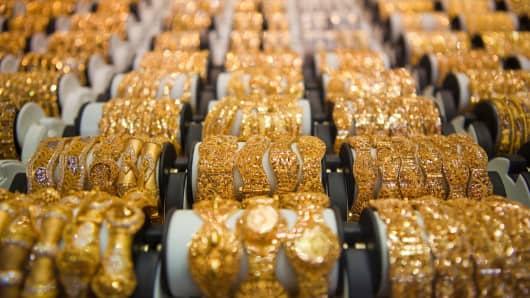While Asian consumers have been an important force in the gold market, helping to offset the blow from heavy bullion-backed exchange traded fund (ETF) selling this year, they may not rescue the precious metal from its steep drop this time around, say analysts.
Gold prices fell over 2 percent on Thursday, breaking through the key psychological level of $1,200 an ounce as speculation about the Federal Reserve scaling back stimulus further heightened deflation fears. Spot gold was last quoted up 0.3 percent at $1,193 in the Asian trading session.

India, one of the world’s top consumers of gold, has imposed a wide range of restrictions to curb bullion imports in an effort to control the current account deficit. Earlier this year, the government hiked the import duty on gold to a record 10 percent and tied bullion imports to a fixed level of exports via the 80:20 rule. This rule stipulates that 20 percent of all gold imported must be exported before further imports can be made.
The measures have been effective in suppressing demand, with gold consumption slumping 32 percent to 148 tons in the third quarter, according to the World Gold Council.
While gold demand out of China and other emerging markets in the region remain intact, this is unlikely to help drive prices higher, said analysts.
“Over the next 12-18 months, – it’s hard to make a case for gold – we’ve got low inflation and potentially a rising U.S. dollar in the background of the Federal Reserve unwinding its monetary stimulus,” said Spooner, who adds that a drop below $1,180 would be a “bearish development” for the precious metal.
“But what plays at the back of my mind is that it remains to be seen whether the world will exit from the current round of major central bank stimulus without inflationary pressure – that makes a case for potentially owning gold, so we may find a base around $1,150-$2,000,” he added.
According to Frank McGhee, head precious metals dealer with Integrated Brokerage Services, the significant rotation out of the metal into U.S. equities is likely to going to continue through next year and drag prices lower.





